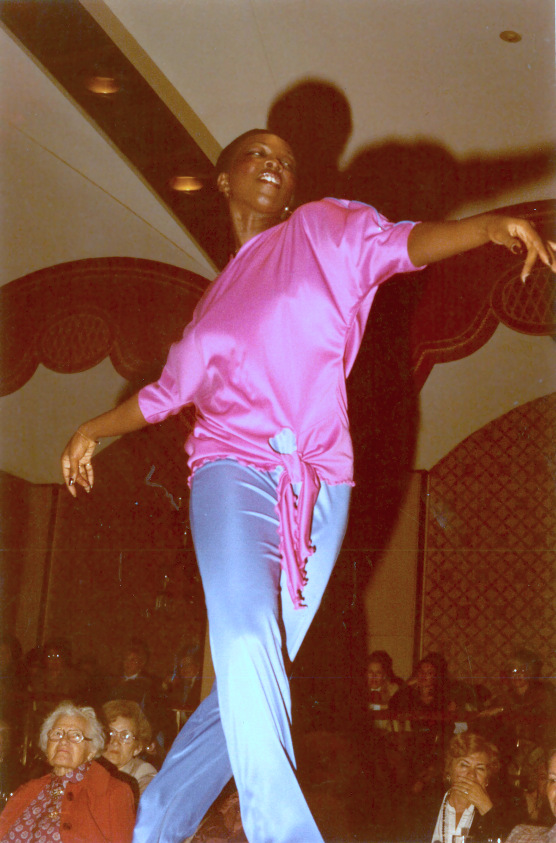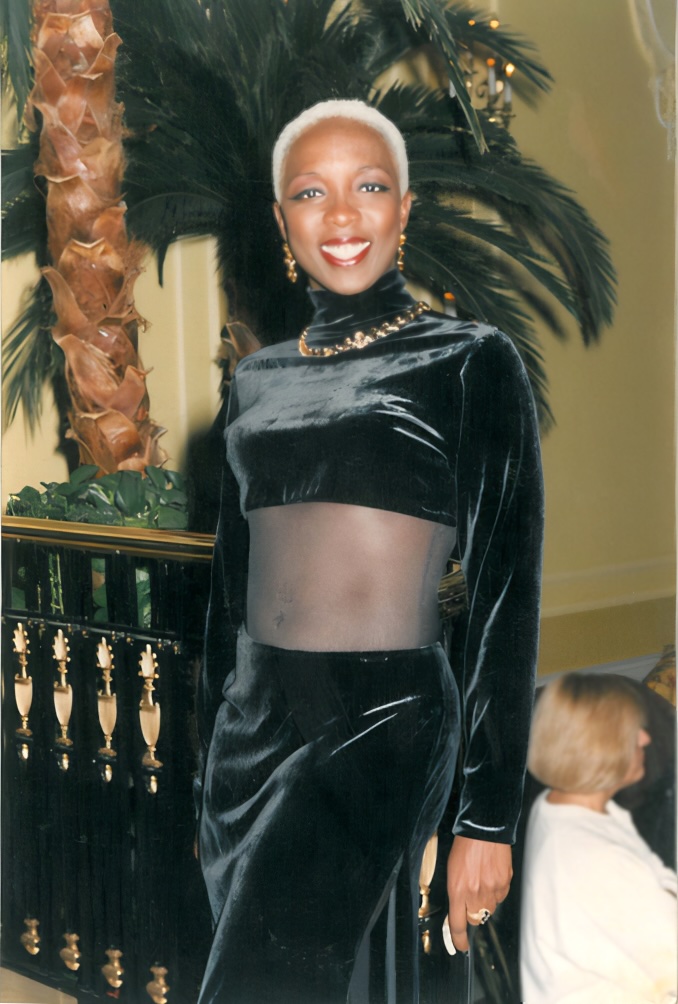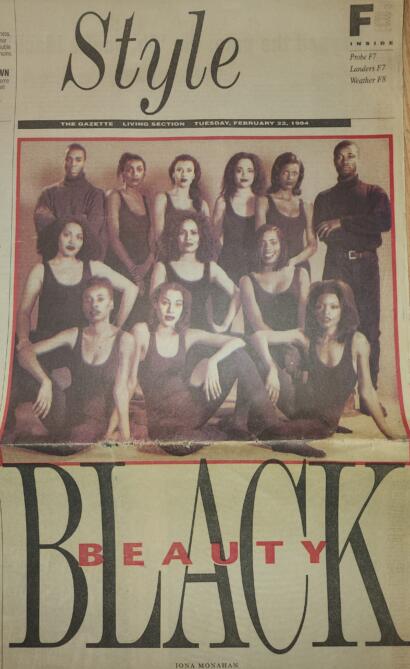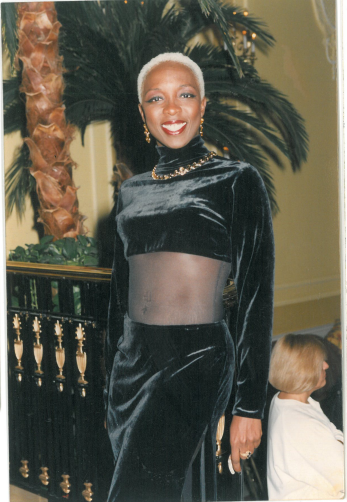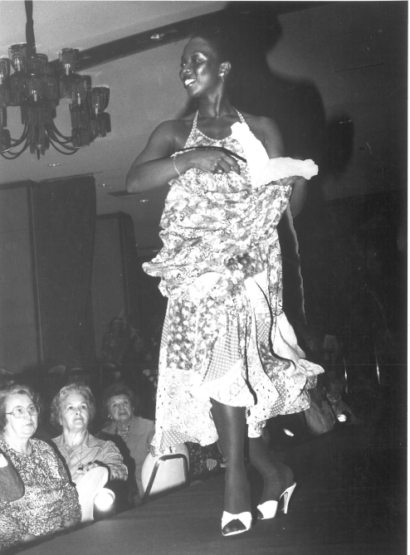June 2024
Month 20xx
Charmaine Gooden
Jacob Marion
“Five, six, seven, eight,” the models count in their heads as they walk onto the runway. “One, two, three, four, pose,” while sharply turning their heads from side to side. “Five, six, seven, eight,” their steps form a mini circle, concluding with a diagonal walk off the runway to the front of the stage. This double eight-count forms the choreography for Dale King’s signature ‘zigzag,’ a runway routine featured at many fashion shows hosted by King and her friend Gemma Raeburn-Baynes.
Taking inspiration from The Ebony Models, a major Black American modelling agency, King and Raeburn-Baynes started The Montreal Ebony Models. Their concept was to showcase fashion on a cast of all Black models in Canada’s fashion capital but with a twist. Contrary to the traditional straight runway walk, King utilized her expertise and envisioned the models strutting the runway in dance.
Early Life and Career
King was introduced to dance in the tenth grade through lessons and performances set up by her English teacher Habza Karamath. After a successful year of dancing, she was invited to perform with her teacher and a Caribbean dance group at a festival in Winnipeg, Ontario. This sparked the beginning of her dance career. “Without a question, this woman changed the projection of my life, and anything I do today in dance and teaching I owe to her,” adds King.
After graduating high school, King began working an office job while continuing dance lessons in her free time. She also kept performing with the Caribbean dance group introduced by her teacher. However, after two years of prioritizing her job, King realized she wanted more. “I had absolutely nothing to show for my life,” she says. King quit her job without any intention of following a dance career, but dance persisted.
An opportunity arose when a friend called her about a dance teaching position at the Negro Community Centre of Montreal. As soon as she walked into the community centre office, she was recognized for her time with the Caribbean dance group and was hired on the spot.
During her time as a dance teacher, King met a “tall white lady” named Linda Woloz at a dance store called Johnny Brown’s. Her father, Wilfred King, had met Woloz and told her about his daughter six months prior. “She goes, ‘listen, maybe in September, I’ll give you a call if I’m looking for a teacher’,” King recounts. “Two days later, she called me.”
This special section creates a photo next to a pull-quote
Contrary to the traditional straight runway walk, King utilized her expertise and envisioned the models strutting the runway in dance. “It wasn’t just walk and show it. It was walk and dance with it.
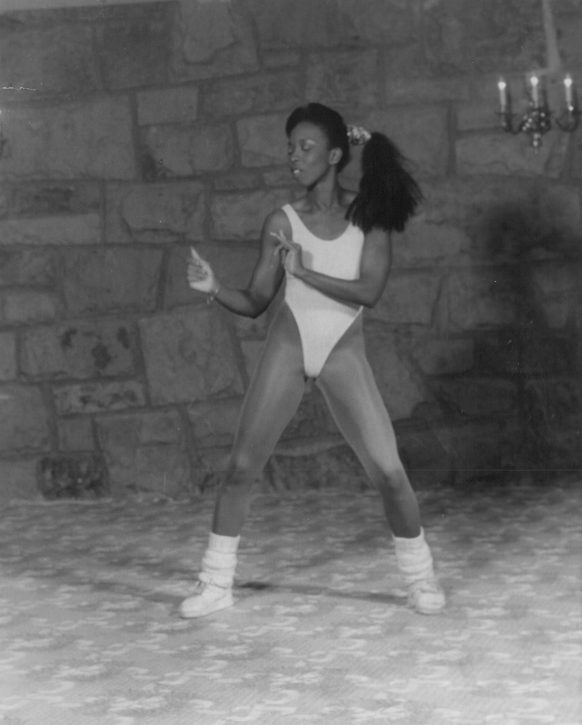
Woolz asked King to teach a jazz class the following day. “I was so scared; this was not the Black community centre, this is a real dance studio,” says King. However, the students and fellow instructors at Jazz Dance Academy adored King and her classes. “So that’s how I started choreographing,” she concludes. “And that’s also when Gemma and I decided to do the fashion shows.”
Their first fashion show took place at Oz, a popular discotheque in Montreal at the time. “It was the most incredible thing. It was Wednesday night, downtown Montreal, 1970 or early [19]80s, with a lineup going completely around the block,” says King. Both King and Raeburn-Baynes invested $50 each towards the tickets for the show and planned for all of King’s fellow dance instructors to model, herself included.
“The studio I was working at was an extremely popular dance studio, and every teacher had around 25-30 students,” King mentions. “I knew we were going to sell the tickets because all your students want to see you perform.” Their first show was a hit, and after that, the pair decided to start their modelling agency.
ROLE OF RACE
Ebony Models was a major Black American modelling company in the 1980s, started by the owner of Ebony Magazine. “Her concept was to have a show to present beautiful designer clothes with beautiful Black women in it,” says King.
Inspired by that concept, King and Raeburn-Baynes knew they needed to introduce the same representation to their city. “Back in the day, I will say this very bluntly, you didn’t see the Black models like you see today,” admits King. Black models didn’t get the same spotlight as they do now, four decades later. “We were not seeing any Black models in the newspapers, magazines, or on television; this was in the [19]80s!” Raeburn-Baynes exclaims. “So, we formed the Montreal Ebony Models.”
Influence and Legacy
The proceeds from their fashion shows raised money for several charities, totalling over $2 Million. “We did this all voluntarily. We didn’t get paid. We just wanted to expose the beauty of the Black community in Quebec,” says Raeburn-Baynes.
Incorporating her dance history, King transformed the traditional runway walk into a choreographed performance, creating her signature zigzag choreography. “I came up with a couple of what I call, ‘the step turn’,” King explains. “You would have a series of three models walking towards each other. Then they would do this turn and slip through each other.” Unfortunately, there are no recordings of the shows, but “It was beautiful.”
King composed five or six regular routines used throughout the shows. “If I had my regular models with me, it would be ok. It was just a matter of calling the routines,” she explains. “The routines I gave them evolved into amazing things,” as the models individualized them in their own signature way.
King and Raeburn-Baynes made a strong effort to spotlight designers at their shows, especially promoting Black designers in Montreal. “We really, really did that. We gave that opportunity that they would not have had if it were not for the Montreal Ebony Models,” Raeburn-Baynes says. The fashion shows provided lasting opportunities for several models and designers in the city.
Iona Monahan, a famous fashion critic from The Gazette, was impressed. “She loved the idea of The Montreal Ebony Models, and she promoted us quite a bit,” says King. Monahan created a spread dedicated to the agency, resulting in their models receiving several bookings.
As the shows continued, King handled the music and choreography, while Raeburn-Baynes found the designers. They made a good team. “Even to this day, when we want to do a fashion show, and we get together Black models in the city, she’s always with me,” adds Raeburn-Baynes.
The Montreal Ebony Models sparked success stories for various models, designers, and creatives. The shows were successful and a significant part of King’s career in dance, from performing to teaching to creating. However, for King, “The strongest part of my career was in teaching and instructing.” She continues to teach today and remains open to organizing another fashion show with Raeburn-Baynes for their city.
We were not seeing any Black models in the local newspapers, magazines, or on television; this was in the 80s!…So we formed the Montreal Ebony Models
About the authors:
Over the years Prof. Gooden has built a multi-media career as an editor, writer, presenter, public relations consultant and special event manager, spokesperson, host, and educator. She...
Read MoreOver the years Prof. Gooden has built a multi-media career as an editor, writer, presenter, public relations consultant and special event manager, spokesperson, host, and educator. She...
Read MoreAbout the author:
Over the years Prof. Gooden has built a multi-media career as an editor, writer, presenter, public relations consultant and special event manager, spokesperson, host, and educator. She...
Read More

